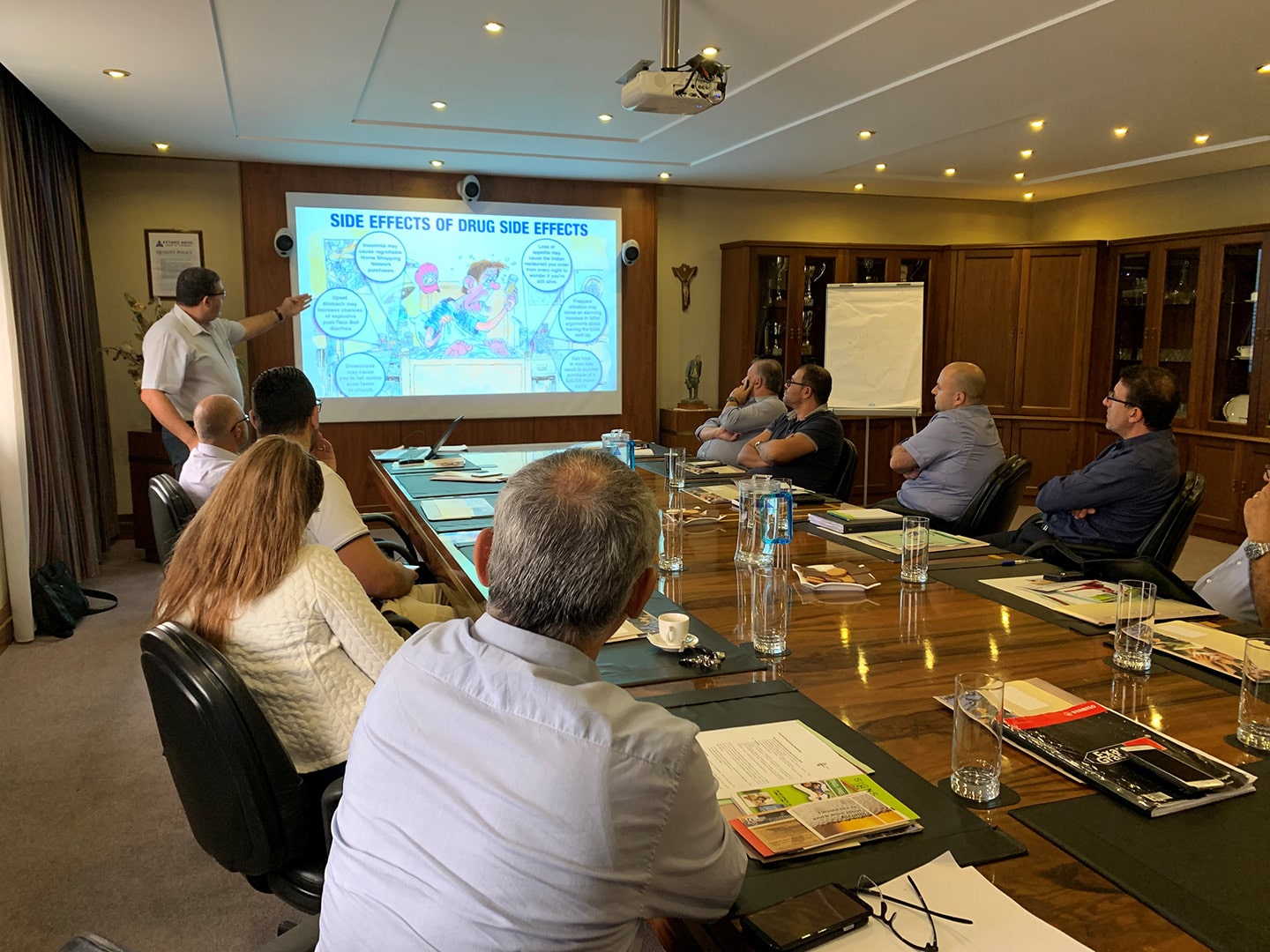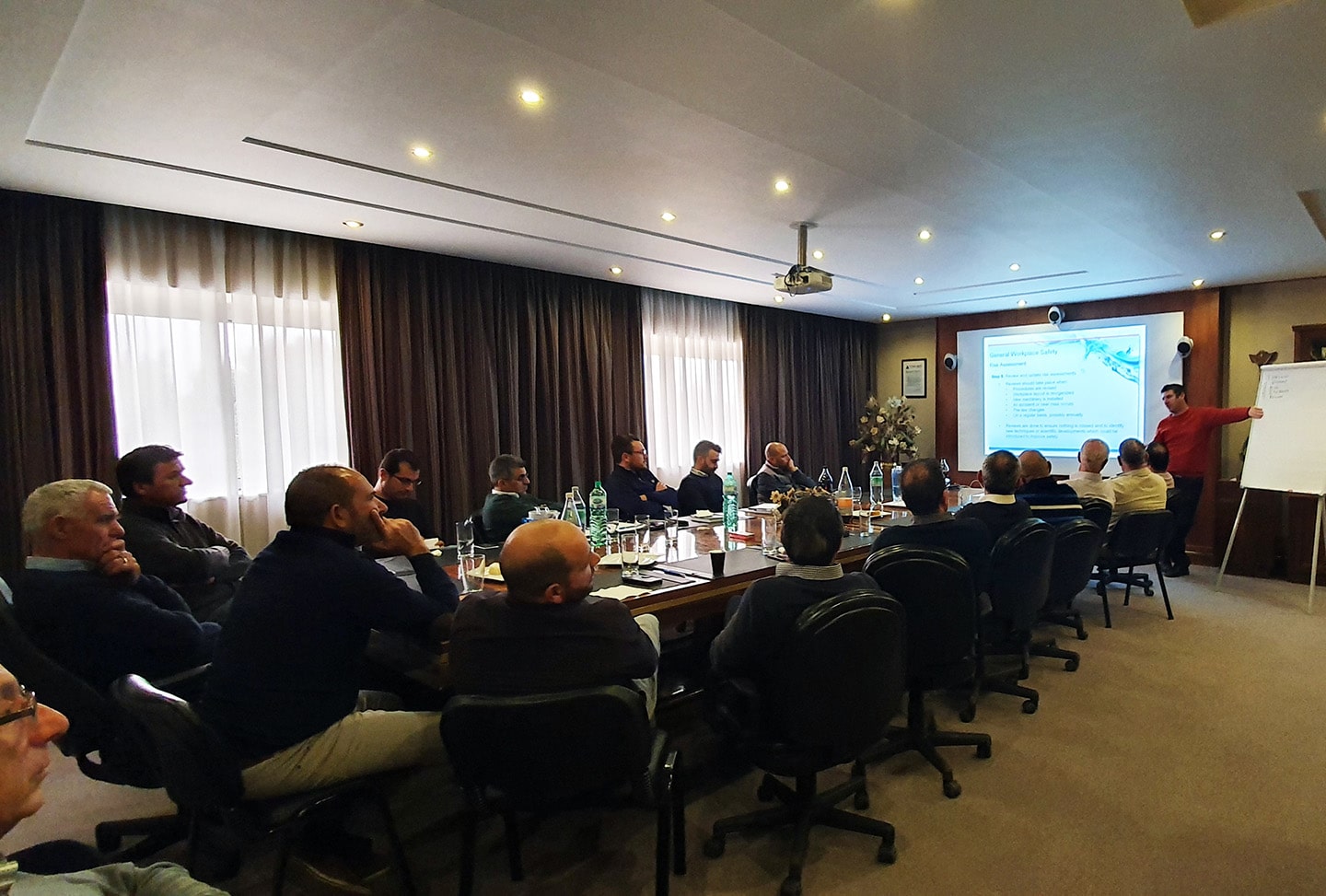Health & Safety
Safety is enshrined in our Group’s policy. Our employees come first and prevention is better than cure. We strive hard to build a safety culture. The construction industry is potentially a hazardous one and the risks are many and varied.
The exposure to accidents is continuous and varies from site to site and from job to job.

Construction activity involves constant change. Change is known to be one of the prime conditions which induces unsafe behaviour and can preclude straightforward defensive measures.
For these reasons ABG believes in the following statement;
”We meet the health and safety challenge through personal commitment from the boardroom to the work site. Nothing we do is so important that we cannot do it safely and our people are educated and empowered to consider accidents and recognise everyone’s safety. We work hard to raise awareness of the risks in our workplace and as part of this; we focus on recording hazards and near misses. This helps us understand what steps to take to make our workplace safer.”
Our Health and safety motto is WORK SAFE, HOME SAFE!
Ensuring safety on a construction site is a complex challenge. Our work brings us in touch with employees from other contractors in ancillary activities. Co-ordination becomes imperative so as to ensure that safety standards are met.
A safety culture has to be present not only on construction sites but wherever our Group activities take us, including within our own production facilities.
This is why we have a safety culture which is rigorously supervised so as to ensure compliance at all times, everywhere. We care about the Health and Safety of our employees.
Our Health & Safety approach focuses on the 9 fundamental basics:

Toolbox Talks
Weekly toolbox talks covering relevant site hazards and activities which help to raise awareness on site. Such talks are valuable to both operatives and management, giving everyone the opportunity to ask questions and provide feedback.

Near Miss Reporting
Near misses are events that could have resulted in an injury, but through luck or quick reactions, no injury occurred. If near misses are ignored, it is likely that eventually, an accident will occur; but by assessing near misses and putting control measures in place to prevent them reoccurring, you can reduce the likelihood of a repeat.

Housekeeping
Good housekeeping is important in any workplace, but particularly on construction sites where there is a lot of manual handling of materials, tools and equipment and waste produced. A tidy site will reduce trip hazards and also fire risks.

Equipment and Machinery
We at ABG strictly conduct frequent tests and checks on all our equipment, tools and machinery prior, during and after any project to guarantee efficient and safe working environment for all employees.

Plan for Safety - Think > Plan > Act
Good planning prior to project commencement is key to reducing risks on site, think about safety when planning the work, coordinate with other trades who may also affect the safety of the work being carried out.

Safety Meetings
Weekly safety meetings on site can be used to discuss any safety issues on site and come up with solutions. These meetings are a good way for site management to get feedback from the workforce, who may be able to highlight site hazards or issues with procedures that have been missed.

Safety Inspections
Site safety inspection conducted once a week to pick up any bad practices or unsafe conditions.

Talk is Cheap - Invest in it
Communication is one of the main key factors for delivering safety. Each communication has a purpose - to deliver a message. Effective communication on site is important to raise awareness of safety initiatives, rules and make sure they are understood by everybody. Communication takes place on site in a variety of formats including informal talks, meetings, posters, documents, memos, hand signals, and, warning signs.
On the Job Training
Although some employees have been in the industry for many years are likely to be far more hazard aware and less likely to take risks. Additional to their experiences, competence training is given to keep levelling up their expertise. They can pick up any unsafe practices and highlight hazards specific to the work undertaken so that specific action is taken to mitigate any hazards.





